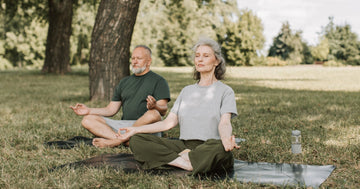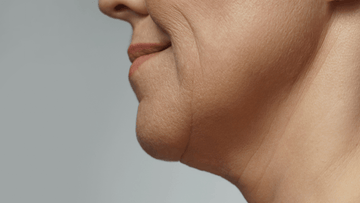What is mindfulness? 7 steps to practice "mindfulness meditation" to help you become aware of your physical and mental state.

In modern society, the pace is fast, and we are overwhelmed by many trivial matters every day. Work, family, partners, and other aspects constantly keep our thoughts in a tense state, leading to significant stress. Over time, this not only destabilizes our emotions but may also affect our physical health. As a result, more and more people are beginning to value the growth of body, mind, and spirit, which not only enhances our emotional well-being but also improves our focus, leading to better work performance. So how can we cultivate our body, mind, and spirit? Today, Le Moi-Peau will introduce everyone to "Mindfulness Meditation." Before we formally introduce it, let’s clarify what mindfulness and meditation mean. What is mindfulness? Is mindfulness related to religion? Mindfulness is a psychological state that involves focusing attention on the present moment, observing one’s thoughts, emotions, bodily sensations, and surroundings without any judgment. By deeply exploring one’s inner world, it helps improve emotional regulation, reduce stress, and enhance psychological flexibility. Mindfulness indeed originates from Eastern religions, tracing back to ancient Indian Buddhist scriptures, particularly the "Satipatthana Sutta" and the "Anapanasati Sutta." These scriptures describe how to cultivate mindfulness to achieve mental calmness, wisdom, and awakening. However, founder Jon Kabat-Zinn deconstructed and ritualized it in 1979, leaving only the practical methods of mindfulness, which are now widely applied in various fields such as psychotherapy, physical and mental health, stress management, and improving quality of life. Many psychologists and medical experts regard mindfulness as an effective therapeutic method, so even if there are religious concerns, one can feel completely at ease trying mindfulness meditation. What is meditation? Is closing your eyes meditation? Meditation is a psychological and physical practice that typically involves focusing and concentrating attention to achieve mental calmness, inner peace, and self-awareness. Therefore, mindfulness is a state, while meditation is a way to achieve mindfulness. Meditation usually includes the following three key points: Mindfulness Meditation Practice: 7 Steps Environment: Choose a quiet place, away from distractions and noise. You can sit on the floor or a chair, focusing on comfort and convenience. Posture: Relax your body naturally, sitting up straight without being overly tense. If you choose to sit on a chair, keep your feet flat on the ground; if sitting on the floor, you can use a cushion or pillow for support. Finally, place your hands on your thighs, with palms relaxed either facing up or down. Preparation: You can enter meditation with your eyes either open or closed, depending on which method allows you to focus more easily on your inner experience. Breathing: Focus your attention on your breath. There’s no need to deliberately change your breathing; just observe it. Feel the airflow entering and leaving your body, and notice the rhythm of inhalation and exhalation. When your thoughts begin to drift, gently bring your attention back to your breath. Letting Go of Distractions: As you focus on your breath, other thoughts, feelings, or emotions may arise. Do not evaluate or judge them; simply accept them and then bring your attention back to your breath. Continuity: Continue your meditation practice, typically recommended for 10 to 30 minutes, depending on your time and comfort level. At first, there’s no need to rush; start with ten minutes. Ten minutes daily is better than a long session of thirty minutes once in a while. As you increase your meditation frequency and become more skilled, you can gradually extend the duration of your meditation. Conclusion: At the end of your practice, slowly open your eyes, breathe gently, and readjust yourself to your original pace of life. The above shared is just an introductory method to mindfulness meditation. As you become more familiar, you can also try other forms of meditation, such as walking meditation, food meditation, yoga meditation, etc. You will surely experience the changes that mindfulness meditation brings to your mental and emotional health with each practice. Awareness of different aspects of yourself, embracing your truest self. Mindfulness meditation is a form of nourishment for the soul, allowing you to feel your most authentic self through daily awareness and self-adjustment. Just like after a long day out, shedding the fatigue from your skin, soothing it with the most natural cleansing and moisturizing. We all need our Me time, returning to our essence through the most genuine state of our skin, embracing ourselves.



